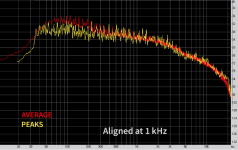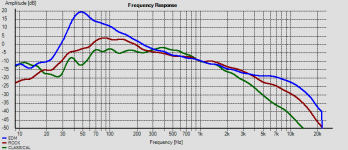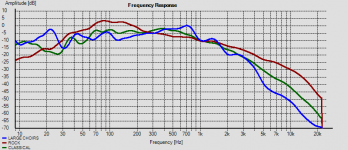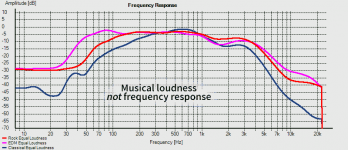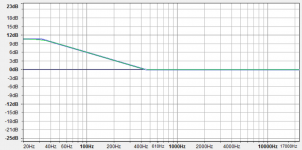It will be tuning. Having picked the standard (A=440Hz?) all instruments will be tuned to it, with harmonics and sub-harmonics as appropriate. Alternatively, the studios did some digital fiddling to get them all on pitch. Anyway, as your result came from a number of different performances the only way you could get such peaks and troughs is if the frequencies from all performances were all fairly accurately aligned. The troughs would be even lower if tuning was perfect, or vibrato was not used (e.g. on some 'original instruments' performances).Pano said:Yes, the spiky graph for classical and opera is an unexpected result. I don't know if it has to do with tuning, dynamics, or something else.
OK, thanks. When I first looked at it they frequency peaks intrigued me, thinking they must be discreet notes and harmonics. But that didn't seem likely averaged over 100+ tracks (fewer than 100 recordings).It will be tuning. Having picked the standard (A=440Hz?) all instruments will be tuned to it, with harmonics and sub-harmonics as appropriate.
Perhaps this shows us that some types of music really are noise.
It will be tuning. Having picked the standard (A=440Hz?) all instruments will be tuned to it, with harmonics and sub-harmonics as appropriate.
Very few classical orchestras use A440 except the british and lesser american ones. Everybody else uses A442-445.
Baroque music has it as A415.
OK, I looked at some current EDM/Dance/Trance tracks. The results are below.What about Electronic Music
The EDM bass content is 30 dB above 1kHz! Rock is 15 dB over 1 kHz. The peak for EDM is 46-48 Hz, or a low F# or G (fa-sol)
Attachments
looks like a subwoofer is must for EDM/Dance/Trance. And one can safely discard super tweeter for most music genres.
When tuning instrument do they take in to account The Fletcher Munson Curve ? Any online guide to standards used in the recording studios, live programmes of tuning/recording levels ?
Regards.
When tuning instrument do they take in to account The Fletcher Munson Curve ? Any online guide to standards used in the recording studios, live programmes of tuning/recording levels ?
Regards.
About recording spectrum and general consequencies...
This is very interesting, Pano!
Some time ago, I tried to make this type of measurement direct from LP, using averaging funcion in ARTA sofware, and also from some digital recordings. The results are very familiar. Even testing with one or two "sonding average" recordings, resembles more os less pink noise.
But I'm curious now to test the averaged vinyl surface noise and a averaged classical recording, only to put in this perspective the (relatively) poor vinyl SN-R for classical. (too many things to make now...)
So, in HF, classical "signals" spends most of it's time at very low leves, close to vinyl surface noise, and sometimes LOWER than that (remember, we listen from 10 to 20dB BELOW the noise level, depending of frequency and other signal present (different fom masking phenomenon).
If one see the Foobar "spectrum" (RTA-like) graph, will note all these tendencies, also, but is not that clear or obvious.
Is not a fixed rule, but I noted that some people prefer to tune their speakers or EQ like the ambient from music he/she like, or following the pink noise tendency. Most classical music aficionados like making a downward HF response.
For me is the opposite... My "live" experiences is with small bands, some garage bands with drums at 30cm from my ears, so sometimes I like some HF boost, and/or flat response from speakers (not downwarding), even if I perceive that is don't the most natural response. And is a matter of preference, since my hearing is "brand-new" according with last audiometry.
But we need to remember... music don't exist; is only a noise. Is a brain byproduct. This is one proof of this! (is almost a pink noise)
Hmmm... time for some controversy
About noise per se, some people are very proud to make a amplifier system with a resultant white noise residual spectrum (when playing nothing), and dismiss devices with 1/f noise, like tubes. For me this type of noise is more natural, a little more pink-ish. I HATE white noise (from a guy that EQ for HF, who understand that?!)! Normally, low noise transistors (JFETs) tends to white noise. I prefer -90dB of pink noise than -100dB of white noise. The HF content of white noise is very perceptible to me.
A disclaimer: I don't build my projects aiming for high noise, of course!
Well. In this case, some people will say: what about tapes? Some have 10kHz noise peak (cassettes anyone?)... at least at 20kHz the content is less, and seems to be a little less flat than white noise.
A last thing to think:
Pink noise: waterfall (natural things)
White noise: gas/compressed air leaking from hoses, etc (most human things)
This is very interesting, Pano!
Some time ago, I tried to make this type of measurement direct from LP, using averaging funcion in ARTA sofware, and also from some digital recordings. The results are very familiar. Even testing with one or two "sonding average" recordings, resembles more os less pink noise.
But I'm curious now to test the averaged vinyl surface noise and a averaged classical recording, only to put in this perspective the (relatively) poor vinyl SN-R for classical. (too many things to make now...)
So, in HF, classical "signals" spends most of it's time at very low leves, close to vinyl surface noise, and sometimes LOWER than that (remember, we listen from 10 to 20dB BELOW the noise level, depending of frequency and other signal present (different fom masking phenomenon).
If one see the Foobar "spectrum" (RTA-like) graph, will note all these tendencies, also, but is not that clear or obvious.
Is not a fixed rule, but I noted that some people prefer to tune their speakers or EQ like the ambient from music he/she like, or following the pink noise tendency. Most classical music aficionados like making a downward HF response.
For me is the opposite... My "live" experiences is with small bands, some garage bands with drums at 30cm from my ears, so sometimes I like some HF boost, and/or flat response from speakers (not downwarding), even if I perceive that is don't the most natural response. And is a matter of preference, since my hearing is "brand-new" according with last audiometry.
But we need to remember... music don't exist; is only a noise. Is a brain byproduct. This is one proof of this! (is almost a pink noise)
Hmmm... time for some controversy
About noise per se, some people are very proud to make a amplifier system with a resultant white noise residual spectrum (when playing nothing), and dismiss devices with 1/f noise, like tubes. For me this type of noise is more natural, a little more pink-ish. I HATE white noise (from a guy that EQ for HF, who understand that?!)! Normally, low noise transistors (JFETs) tends to white noise. I prefer -90dB of pink noise than -100dB of white noise. The HF content of white noise is very perceptible to me.
A disclaimer: I don't build my projects aiming for high noise, of course!
Well. In this case, some people will say: what about tapes? Some have 10kHz noise peak (cassettes anyone?)... at least at 20kHz the content is less, and seems to be a little less flat than white noise.
A last thing to think:
Pink noise: waterfall (natural things)
White noise: gas/compressed air leaking from hoses, etc (most human things)
Last edited:
Many time ago I listen to a doctor, saying that one of the best ways to sleep when insomnia is a problem, is to listen white noise. How? Very easy, tuning an FM receiver to an unused channel/frequency, usually one of the 2 ends. I didn't need it, but it works by (perhaps) its "naturality"?
Back in the early '80s, when portable, battery operated RTA became available, I took one to a live symphony performance. San Francisco. 5th row, center. I recall being surprised about how "flat" the results were. Yes, the top octave or two were down, but the rest was close to flat. Yes, it was a very limited device, 1 octave bands.
I'll plot my classical results against pink noise so you can compare to your 80s vintage RTA.
There are 3 main flavors of noise, White, Pink and Brown (also called red). White has equal energy at all frequencies. Pink falls at 3 dB/octave, Brown noise at 6 dB/ octave. And there is also Grey noise, which has been filter with an equal loudness curve. I will plot those and show them here, so you have an idea of those vs the music styles I've been plotting.
I would not try to make my system room response match any of the noise spectrums exactly, there are other curves that work better in domestic spaces.
There are 3 main flavors of noise, White, Pink and Brown (also called red). White has equal energy at all frequencies. Pink falls at 3 dB/octave, Brown noise at 6 dB/ octave. And there is also Grey noise, which has been filter with an equal loudness curve. I will plot those and show them here, so you have an idea of those vs the music styles I've been plotting.
I would not try to make my system room response match any of the noise spectrums exactly, there are other curves that work better in domestic spaces.
Here is a view you might find interesting. It's 3 types of music, Rock, EDM and Classical Symphonic as seen by loudness. This is not the frequency response of each type of music, but how loud it will sound to your ears.
This is approximate, of course. It's weighted by the Equal Loudness curves. Those change with level, so how loud each frequency band is to you, will change. This is just to give a feel of how loud each type might sound, consider it a view of tonal balance.
This is approximate, of course. It's weighted by the Equal Loudness curves. Those change with level, so how loud each frequency band is to you, will change. This is just to give a feel of how loud each type might sound, consider it a view of tonal balance.
Attachments
...The files analyzed for the this test are the average of approximately 112 different recordings in each genre...all tracks were normalized...Let me know what you think.
Have you ever noticed how different 5.1 classical recordings sound than stereo discs, in terms of overall spectrum? Especially Blu-Ray discs.
Chris
Some autoradios have selectable equalization presets for music genres. Mine has Rock, Classical, Speech, Linear (and Custom). Is that causing double colorization? I mean if classical music already lacks top and bottom, the Classical equalization further filters the extremes.
If you pull up the music track in something like Audacity, you can easily see the mastering EQ (attenuation) that's been applied, and hear and see the difference when the EQ spectrum is restored. The reason for the high frequency fall off is generally due to the miking distance--usually on the order of 3-5 metres/yards from the musicians. The HF spectrum will have greater relative amplitude than a string-only orchestra if wind instruments, particularly brass, and percussion accompaniment are written into the compositions.
With classical recordings, I find the following EQ curve within Audacity is a good place to start. Sometimes balancing the "tilt" of the EQ spectrum is needed after finding the correct bass EQ, as well as normalizing/moving the entire EQ curve down if the bass restoring EQ results in clipping.
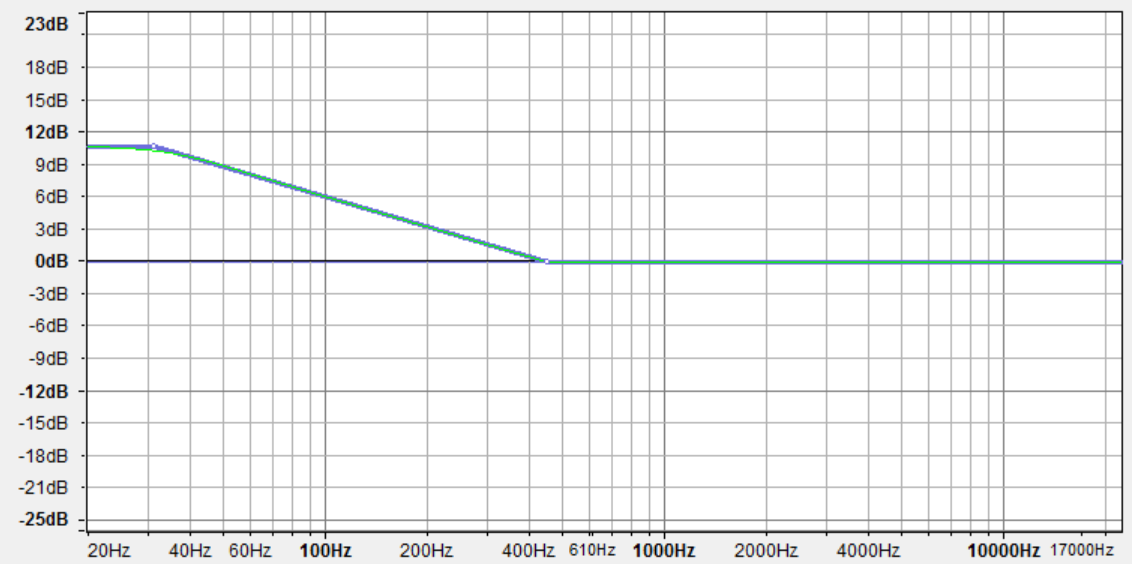
With classical recordings, I find the following EQ curve within Audacity is a good place to start. Sometimes balancing the "tilt" of the EQ spectrum is needed after finding the correct bass EQ, as well as normalizing/moving the entire EQ curve down if the bass restoring EQ results in clipping.
Attachments
Last edited:
Chris,
Can you post a frequency response at the listening position in your room? Even a 1/3rd Octave smoothed one is fine. I am interested in the overall shape. It seems like you are compensating for the speaker's response by boosting the bass in the recordings. I have several classical recordings, and I find them to be most pleasing, and do not find the need to apply such high levels of boost to the low frequencies.
Can you post a frequency response at the listening position in your room? Even a 1/3rd Octave smoothed one is fine. I am interested in the overall shape. It seems like you are compensating for the speaker's response by boosting the bass in the recordings. I have several classical recordings, and I find them to be most pleasing, and do not find the need to apply such high levels of boost to the low frequencies.
- Status
- This old topic is closed. If you want to reopen this topic, contact a moderator using the "Report Post" button.
- Home
- General Interest
- Everything Else
- Spectrum of Musical Genres
